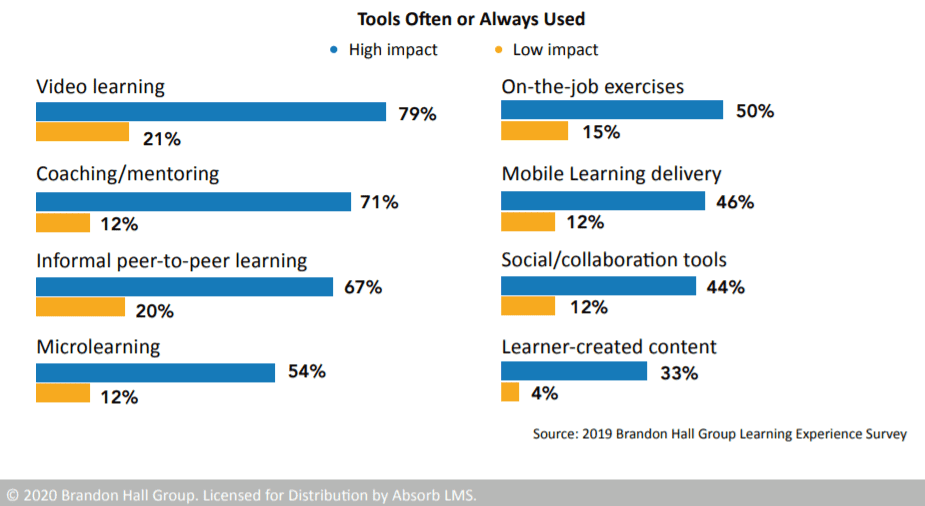Are you among the companies that navigated the challenges of the 2020 COVID pandemic by adopting virtual customer onboarding? Perhaps you saw it as a temporary solution, a band-aid until returning to onsite procedures becomes feasible. It seemed like a smart move for your business.
But have you considered that even when onsite onboarding is an option again, sticking with virtual delivery might actually be a strategic advantage? Fusing virtual customer onboarding can yield remarkable benefits depending on your product or service and your business’s stage.
Let’s explore how customer onboarding can elevate your business to new heights!
Customer onboarding by type of business
Small businesses – up to 60 employees and 100-150 customers.
- Most able to provide ad-hoc, one-on-one training onsite or remotely.
- You may want to retain one-on-one training if you are in the mode of gathering customer feedback to define what successful onboarding looks like.
Growing companies – more than 60 employees and 150 customers.
- Must start scaling customer onboarding and training delivery.
- For most companies, one-on-one training will become too time-consuming or costly.
- We must begin to add standardized elements to cover the existing customer base with internal assets.
Larger companies – with more employees or more customers coming on board.
- Customer success teams become larger, and turnover is more common. The teams are often in a constant state of onboarding internal employees.
- Must develop defined and repeatable onboarding to provide a consistent experience, or customer churn rates will rise.
- Must develop an onboarding platform to deliver a standardized onboarding experience.
Limitations of onsite onboarding
Face-to-face training has benefits. But you can see, or you’ve experienced yourself, that it may not be the most effective way to onboard a customer. In fact, according to Deloitte research, at least 38% of customers drop out of the onboarding process, often as a result of frustration with the sheer volume of touchpoints and paperwork involved.
Digital onboarding can help correct that problem, as well as offering a host of additional benefits,
- Reducing troublesome touchpoints and lowering frustration levels.
- Reducing costs and improving compliance by automating all or parts of the onboarding process.
- Providing digital-savvy customers the consistent, seamless, and efficient onboarding experience they expect.
So, what do we mean by digital onboarding, and how can it help your business in the long run?
The tools of effective digital onboarding
When we talk about digital onboarding, generally, we’re talking about using three tools.
- eLearning
- Video
- Mobile apps
Digital tools are so effective, in fact, that they are in common use by companies who say their learning efforts have had a high impact on key measures such as employee engagement, performance, and retention. In a recent survey conducted for TrainingIndustry.com, the Brandon Hall Group ranked various training modalities according to how commonly they are used by companies with high-impact training programs (and low-impact training programs).
The graph below shows that video learning is the most commonly used training tool among companies to have high-impact learning efforts. eLearning and mobile learning also rank as important tools.

Here’s a rundown of the advantages of each for your onboarding program.
eLearning for customer onboarding
Many people think of eLearning as a structured course or learning experience delivered electronically. It can also include a performance support service (PSS), content that employees can access in the workflow just as they need it. You may be most familiar with eLearning as a 20-30-minute course you take on your workstation, though, increasingly eLearning is delivered as so-called microlearning, or single lessons as brief as 3-7 minutes.
The most apparent advantage of eLearning for your company may be that you can create it one time and deliver it again and again.
eLearning has a variety of benefits for your customers as well.
- eLearning reduces your customers’ time commitment to coming up to speed on your offering. It takes 40-60% less time to cover material in eLearning rather than a traditional face-to-face setting.
- It can also help give customers a smoother and more consistent user experience over time. eLearning can help you make ongoing customer training easy and accessible. That training helps ensure a smooth, incident-free rollout as you release product or service updates.
- Learning technology can encourage customer feedback and collaboration by giving customers a platform that supports a communications channel.
- Despite the reduction in learning time, eLearning has been shown to improve customer retention of onboarding material by 25-60%.
Video learning for customer onboarding
The brain’s basis for processing information makes humans biased toward video learning. It’s a matter of cognitive load. According to MIT neuroscientists, the human brain can process an entire visual image in as little as 13 milliseconds or as many as a dozen images a second. Another study found that the human brain may process video content as much as 60,000 times faster than text. That’s likely what accounts for video’s position as the most frequently used format in high-impact learning.
Videos are already an accepted feature of employee learning. Here’s why:
- A Nielsen Norman Group study showed that average people read only about 20-28% of the words on a page.
- According to Forrester Research, people are 75% more likely to watch a video than to read documents, emails or web articles.
- Those figures correlate well with research on memory. According to Psychologist Jerome Bruner, people remember only about 10% of what they hear, 20% of what they read, but 80 % of what they see or do.
Studies have shown the net effect of people’s preference for images, and video means that adding video can improve people’s ability to remember concepts and details — with effects that increase over time. Presentations that include visuals like video along with slide text are 9% more effective than text alone at the end of your training. And over time, the effect is more pronounced, with video proving to be as much as 83% more effective when tests are delayed.
Mobile learning delivery for customer onboarding
Mobile, of course, is more of a platform choice than a different form or format of content. It’s an important choice, nonetheless. A recent Comscore study found that nearly 80% of U.S. total online minutes are spent on mobile.
But while mobile use is only increasing, users are getting increasingly choosey about what they will watch and use on their mobile devices.
- While mobile app use was steadily increasing through 2017, people have become conservative since. Only 33% of people would download a new app in 2019.
- Users give new mobile apps very little time to prove themselves. They decide which apps they will abandon in as little as 3 days. ‘Decent’ apps, those most users retained for at least seven days, stick around much longer.
On the net, what customers expect in their mobile apps is better user onboarding experiences that shorten time to value and fast-track product adoption. Unsurprisingly, that’s very similar to what customers want from learning: quality experience (76% of learners rank this as important), content that’s timely and relevant (69%), and clear objectives (63%).
So, digital onboarding is good for you and welcomed by your customers. But, if you’re not doing it effectively now, ramping up quickly may seem daunting. Can you really put together a series of videos with targeted content, roll out a mobile app at scale, or design an optimal eLearning package for just-in-time learning?
How AI is impacting virtual customer onboarding
AI will revolutionize virtual customer onboarding by making it faster, easier, and more personalized. It will use data to understand each customer’s preferences and needs, creating a tailored experience. Chatbots and virtual assistants will provide instant support, saving time for both businesses and customers. AI will also ensure accuracy and security during the process.
It turns out you can. And Kalles Group has helped clients transition from onsite to remote onboarding quickly enough to stay ahead of and capture rapid increases in customer demand.
We can help you, too. Read our case study on how we developed an eLearning solution for an innovative Healthcare service provider. You can also request a free consultation to get started.

